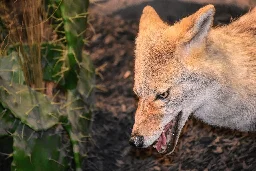From spooky lore to science fact: Unmasking the 'chupacabra'
From spooky lore to science fact: Unmasking the 'chupacabra'
With its gray, scaley skin, protruding dorsal spines, menacing fangs and proclivity for small livestock, the mythical chupacabra has stoked both curiosity and fear across portions of the Americas for decades.

cross-posted from: https://lemmy.world/post/20893597
With its gray, scaley skin, protruding dorsal spines, menacing fangs and proclivity for small livestock, the mythical chupacabra has stoked both curiosity and fear across portions of the Americas for decades.
If you consider the most common descriptions of the chupacabra, from its physical appearance to its behavior, you're likely dealing with a coyote that is in the late stages of mange.
Mange is a debilitating disease that can infect a wide range of fur-bearing mammals,depending on the animal's ability to overcome the symptoms of mange, the condition can become chronic, leading to behavioral changes and even death.
On canids, the last place they lose fur is right between the shoulder blades in an area that we call the ruff, this fits descriptions of chupacabras having spikes or a ridge along their backs.
The vampire-like punctures often reported on victims of the chupacabra also correspond with the coyote's standard predation method of strangulation through multiple bites to their prey's neck.
Reports of chupacabras fully draining an animal of blood may also be explained by how rapidly blood will settle and coagulate within the dead animal, making it appear as though it has been drained.